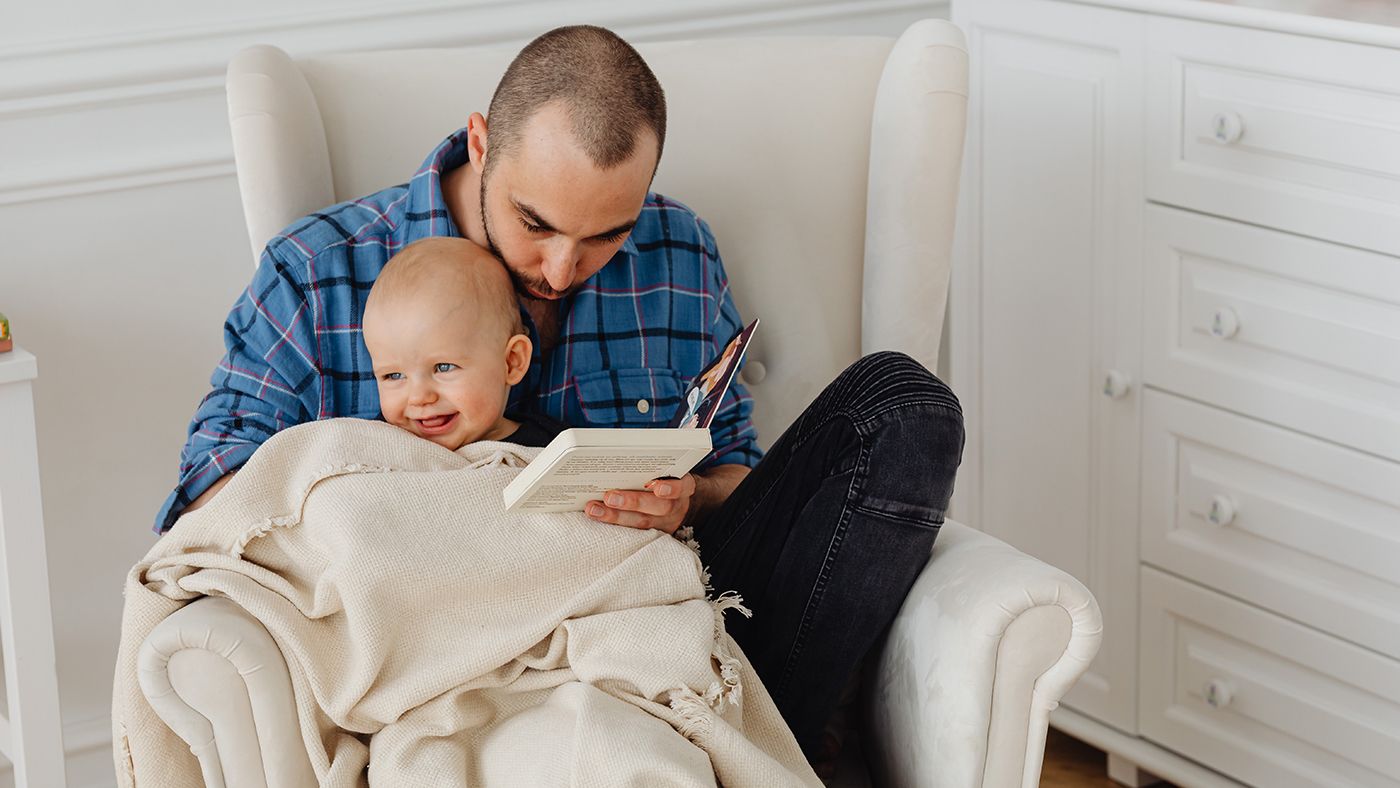Babbling is your baby's new voice!

Your baby has been paying attention to the sounds that they are hearing. They may be making eye contact with you and be trying to copy some of your mouth movements. They are becoming more aware they can communicate with you and are beginning to make more sounds and use gestures. They are exploring the sounds that they can make and will begin to experiment with ways to respond to you using their babble.
Why does my baby babble?
You will have been chatting with your baby for some time by now and your baby is beginning to understand that they can join in with conversational turn taking. They have been watching your mouth move as you have been talking and singing to them and also watching how you have responded to their sounds. They are now able to connect with you using their own communication widely known as ‘babbling’.
Babbling can take place either in company or alone. Your baby may babble away to themselves when they wake in the morning (or night!). It is a positive step for your baby, to be left alone to babble. They are exploring their new voice; it is an important part of their growing language development.
They are learning to express themselves, and build relationships
Babbling is a crucial stage for your baby as not only are you forming a beautiful bond with each other, but you are also building a firm foundation for their future social and emotional development. When your baby begins to make sounds, they will use these as well as movement and smiles to interact with others. These early developments with making connections and holding babbling conversations together are crucial for your baby’s ability to form stable relationships as they grow up. Babies and children who have been given a wealth of caring and sharing times, where everyone is listened to, are more able to express ideas and develop friendships with others.
The science behind babble
Babbling is a key sign that your baby is beginning to gain control of their voice. This means your baby is starting to control the movement in their throat, allowing them to extend their pitch changes, loudness and explore more controlled babble.
Initially, your baby’s babble will consist of short consonant and vowel sounds such as “baa”, “daa” and “maa”; this is due to the tongue's size and position in relation to the mouth.[1] These will initially be produced in isolation.[2] As your baby grows and develops, their range of sounds and vocalisations will increase.
Alongside this, your baby has been storing and linking the sensory information received when they have been creating movements with their mouths. Their mouths have been exploring the feelings of touch, movement and pressure while being aware of the responses they have been given to their vocalisations by familiar people around them. Your baby is starting to understand they have control of their mouth and throat and are using their experience to repeat the same movements to make the same sounds.[1]
What might you hear next?
You'll see (and hear) that your baby starts to develop their range of consonants and vowels. As the range increases, consonant and vowel sounds will start to become more meaningful and you will be able to interpret them as words, enhancing the communication further.
References:
[1] Vihman. M.M (2014). Phonological Development. The First Two Years. Wiley Blackwell
[2] Oller. D.K (2000). The Emergence of Speech Capacity. Psychology Press